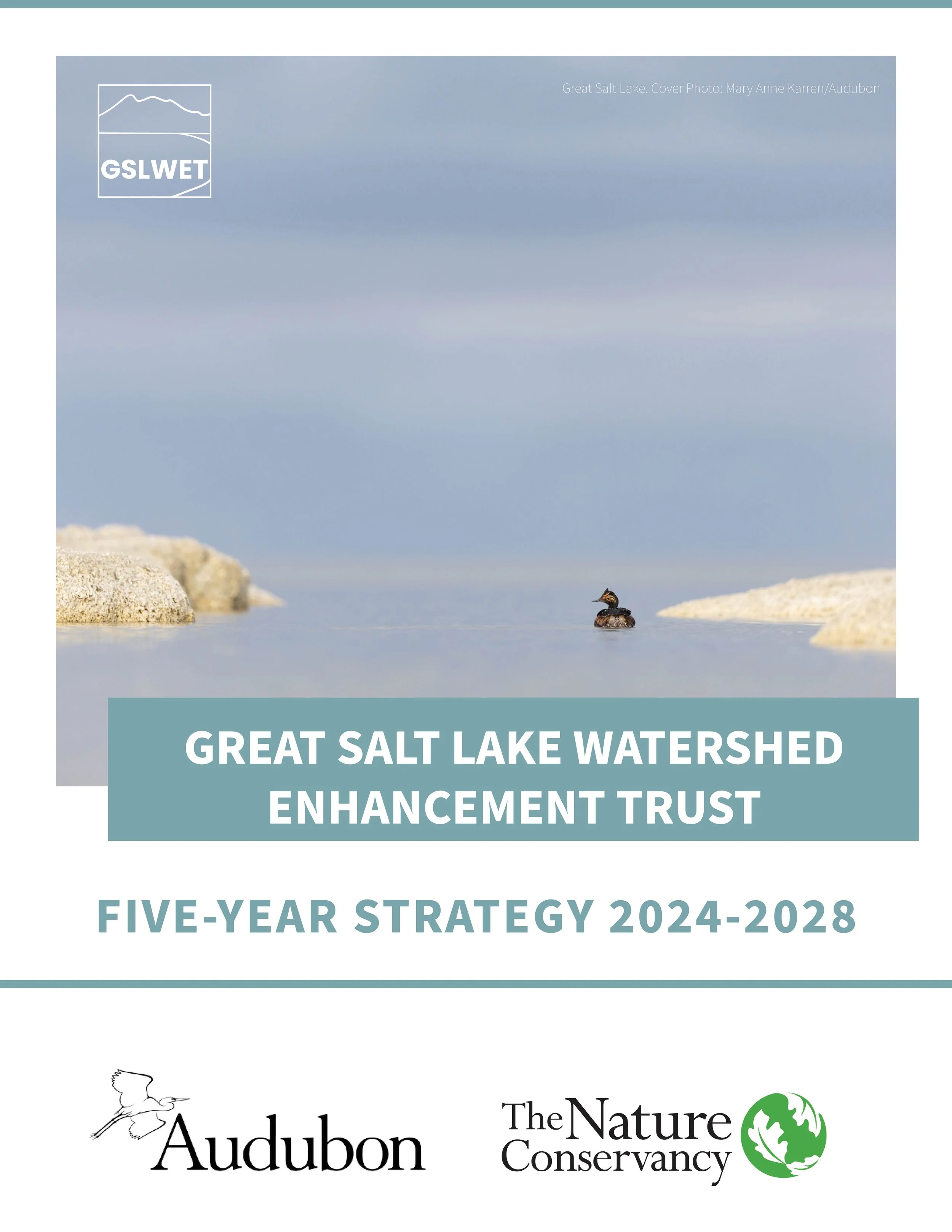
Five-Year Strategy
2024-2028
As Great Salt Lake faces a pivotal moment — continuing low water levels and increasing salinity levels — the Great Salt Lake Watershed Enhancement Trust has adopted a five-year strategy to guide its efforts in helping to address the challenges facing Great Salt Lake and its wetlands.
Great Salt Lake and its associated wetlands are an essential intertwined ecosystem that supports economic, ecologic, cultural, community, and public health benefits. Increased salinity levels are threatening the health and viability of brine flies and brine shrimp, as well as the migratory birds that depend on them, and low water levels threaten the health of the communities that surround the lake. In the face of this predicament, water leaders, policymakers, and organizations like the National Audubon Society and The Nature Conservancy are considering ways to keep communities and the environment thriving, in the face of water shortages due to growing populations, increasing evaporation rates, drought, and changes in precipitation and climate patterns.
Great Salt Lake and its viable wetlands requires an ‘all hands-on deck’ approach. The Great Salt Lake Watershed Enhancement Trust (GSLWET or “the Trust”) is one of the strategies to help address the water challenges facing Great Salt Lake and its wetlands, slowing the rate of decline as we work in collaboration to change Great Salt Lake’s trajectory and preserve this vital ecosystem.
GSLWET ACTIVITIES & OBJECTIVES
Stabilizing wetlands and associated habitats instrumental for Great Salt Lake hydrology and building climate resilience and protecting natural infrastructure
Increasing the amount of habitat in good condition to sustain wildlife
Assisting in efforts to control invasive species like phragmites
Expanding recreational opportunities or access to nature for communities
Protecting future water availability by maintaining nearby upland areas and the hydrology connecting them to Great Salt Lake open waters
GSLWET will pursue a variety of conservation strategies as part of a holistic approach to help sustain the overall benefits provided by the lake and its wetlands.
DEFINING PROGRAM OBJECTIVES & MEASURING SUCCESS
GSLWET’s adaptive management approach depends on tracking progress toward clearly defined objectives and using appropriate outcome metrics. GSLWET’s quantifiable targets help articulate the Trust’s priorities, guide activities, and manage expectations regarding what the program can achieve.
**Achieving these goals will take additional resources.
BUILDING & STRENGTHENING PARTNERSHIPS
Utah Department of Natural Resources and its many Divisions
Private, State, and Federal Wetland Managers
Water Conservation Districts, Private Water Suppliers, Municipal, County, and Other Local Governments
Agricultural Producers and Irrigation Companies
Communities and Tribes
GSLWET understands that the path to a successful program depends on building long-lasting, collaborative partnerships across the Great Salt Lake watershed. GSLWET will focus on developing strong relationships with key water users and providers such as:
“GSLWET’s Five-Year Strategy exemplifies the importance of partnership, as many experts and leaders lent their time and expertise into crafting the strategies this plan sets forth to help the Trust address the challenges facing Great Salt Lake. With partnership at its bedrock, this strategy sets goals that will maximize the impact of the Trust’s work and help to secure Great Salt Lake’s future.”


